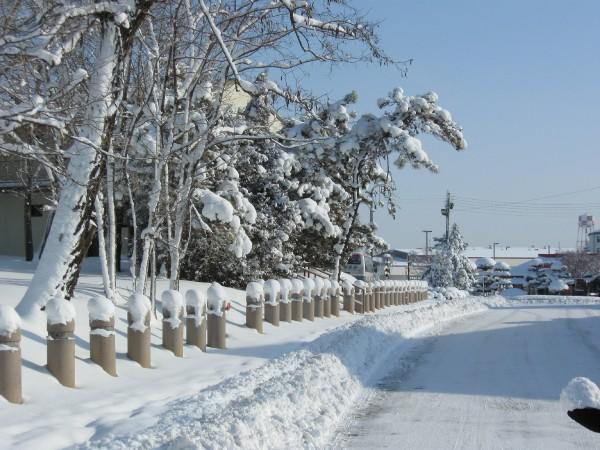|

On March 14, 2010 The Eastern Native Tree Society
and Western Native Tree Society switched from discussion lists on Google
Groups to a new discussion list in a Bulletin Board format at:
http://www.ents-bbs.org/index.php
Posts made since the inception of the BBS on march 14, 2010 will be
sorted and archived on the BBS. Click on the link above to go to the
equivalent section on the new BBS. This website will continue to serve
as a front end for the ENTS and WNTS groups. It will continue to serve
as a repository of older posts, and will serve as the host site for
special projects and features that are not well suited for a BBS format.
Please visit the BBs for the latest information and trip reports.
 Videos
of Asian Forests
Videos
of Asian Forests
External Links
Armenia - Listed with Europe
Azerbaijan - Listed with Europe
Bhutan
China
Georgia - Listed with Europe
India
Japan
Kazakhstan: Forests and Trees
The Fatherland of Apples- The
origins of a favorite fruit and the race to save its native habitat by
Gary Paul Nabhan.
http://www.orionmagazine.org/index.php/articles/article/2961
THE FRAGRANCE of the forest is unlike any I have ever known. The smell
of ripening and rotting apples and pears fills my nostrils. At my feet,
russet reds, blushing pinks, vibrant roses, and creamy yellows mottle
the ground, where wildlife has half-consumed the wild fruit that makes
this Kazakh forest so bountiful.
Kazakh forest steppe (PA0809)
http://www.worldwildlife.org/wildworld/profiles/terrestrial/pa/pa0809_full.html
The Kazakh forest is quite distinct from the forest steppe in European
Russia. Situated 300 to 500 km to the north, it has a more continental
climate and many more wetlands. Flora of the ecoregion is enriched by
species from surrounding boreal, sub-boreal and steppe regions.
Biodiversity Assessment for
Kazakhstan. USAID CENTRAL ASIAN REPUBLICS MISSION, ALMATY, KAZAKHSTAN.
JUNE 2001.
http://pdf.usaid.gov/pdf_docs/PNACN468.pdf 76 pages.
WE DO NOT PRESERVE WHAT WE HAVE -
Green Women
http://www.greenwomen.freenet.kz/xxi_kz_eng.htm
Within last ten years in Kazakhstan forests were treated as if they
covered most of the country’s territory. In reality forests cover only
4.2% of the country’s overall territory. Moreover, this figure includes
bushes and desert plants. Actual forests grow on only 0.4% of the
territory.
Burabay (Borovoe) National Nature
Park.
http://www.kazakhstan.orexca.com/national_park_burabay.shtml
In the north of Akmola region the SNNP "Burabay" is located. This resort
pearl of Kazakhstan is a fantastic mountain land harboring mysterious
wonders. Gorgeous pine forests, cliffs formed of neat gigantic natural
bricks, and fantastical shapes of peaks resembling sometimes exotic,
sometimes Egyptian pointed pyramids separated by serene lakes. The SNNP
"Burabay" was established in August, 2000 and it is under the
supervision of the Administration of Presidential Affairs. The territory
of SNNP "Burabai" is a part of the Kokshetau steppe, a mixed steppe and
forest and hilly upland. The climate is extreme continental here, with
hot summers and severe winters. The topography of the territory consists
of lowlands, hills and plains.
Quest for Better Apples Bears
Fruit for U.S. Botanists Bijal P. Trivedi for National Geographic Today,
October 30, 2001.
http://news.nationalgeographic.com/news/2001/10/1030_TVapples.html
Forsline's quest takes him to the remote forests of Kazakhstan, where,
botanists believe, the first apple trees took root. As he wanders, he
collects seeds and twigs from wild apple trees that he will grow in the
orchard in Geneva, New York.
Kazakhatan Nature Reserves
http://kazakhembus.com/index.php?page=nature-reserves
Mongolia
Nepal
North Korea
Russia, Asia: Forests and Trees
Global Forest Watch
http://www.globalforestwatch.org/english/russia/overview.htm
Nearly a quarter of the world’s current forest area is in Russia. Russia
has retained about two thirds of its estimated original forest area.
Given their magnitude, Russia’s forests play an important role in the
world’s climate. A new study by GFW Russia shows that only about a
quarter of the forest zone of Russia is still in large blocks of
road-less wilderness – so called intact forest landscapes (also known as
frontier forests). This is less than the previous estimate of more than
two fifths.
Atlas of Russia’s Intact Forest
Landscapes.
http://www.forest.ru/eng/publications/intact/ Approximately
289 million hectares (26 percent of the forest zone) remain as large,
intact forest landscapes in Russia. Approximately 5 percent of the
intact forest landscapes are in areas with special protection at the
federal level. Eastern Siberia is the part of Russia that is least
affected by modern land use, with 39 percent of the forest zone still
intact, followed by the Russian Far East (31 percent intact) and Western
Siberia (25 percent intact). European Russia is the most affected (9
percent intact).
Добро пожаловать на интернет-сайт
FOREST.RU!
http://www.forest.ru/ Наш сайт
посвящен российским лесам, их охране и устойчивому использованию. Здесь
Вы можете познакомиться с точкой зрения российских неправительственных
природоохранных организаций (НПО) на наиболее важные проблемы лесов
России и сопредельных государств, с позицией официальных представителей
государственных структур, комментариями и мнениями учёных. (I don't have
a clue - but it looked official)
Russia’s Boreal Forests
http://assets.panda.org/downloads/russia_forest_cc_final_13nov07.pdf
4 pages.The Russian national protected area system includes:
• Approximately 100 zapovedniks – strict nature reserves meeting the
category 1 criteria of the IUCN classification of protected areas –
covering about 330,000 km2 (about 1.4 per cent of the country’s otal
area);
• 36 national parks, totaling over 6.8 million hectares;
• 69 federal zakazniks, or wildlife refuges;
• more than 3,000 regional zakazniks;
• more than 10,000 nature monuments, including 28 of federal importance;
• more than 40 regional nature parks; and,
• hundreds of other protected areas ranging from a forested area in the
middle of Moscow to large tracts of Siberia and the Arctic. These range
in size from 2.31 km2 (570 acres) to 4,692 km2 (1,876.8 mile2). The
state plans to create 15 new areas by 2010.
Last Intact Forest Landscapes of
Northern European Russia
http://www.wri.org/publication/last-intact-forest-landscapes-northern-european-russia
This first attempt at identifying boreal forest areas of minimal human
disturbance (intact) using high-resolution satellite imagery reveals
that only 14 percent or 32 million hectares of the boreal or northern
forests of European Russia remain. Download Reports, Charts & Graphs
http://archive.wri.org/publication_detail.cfm?pubid=3170
South Korea
Taiwan
|